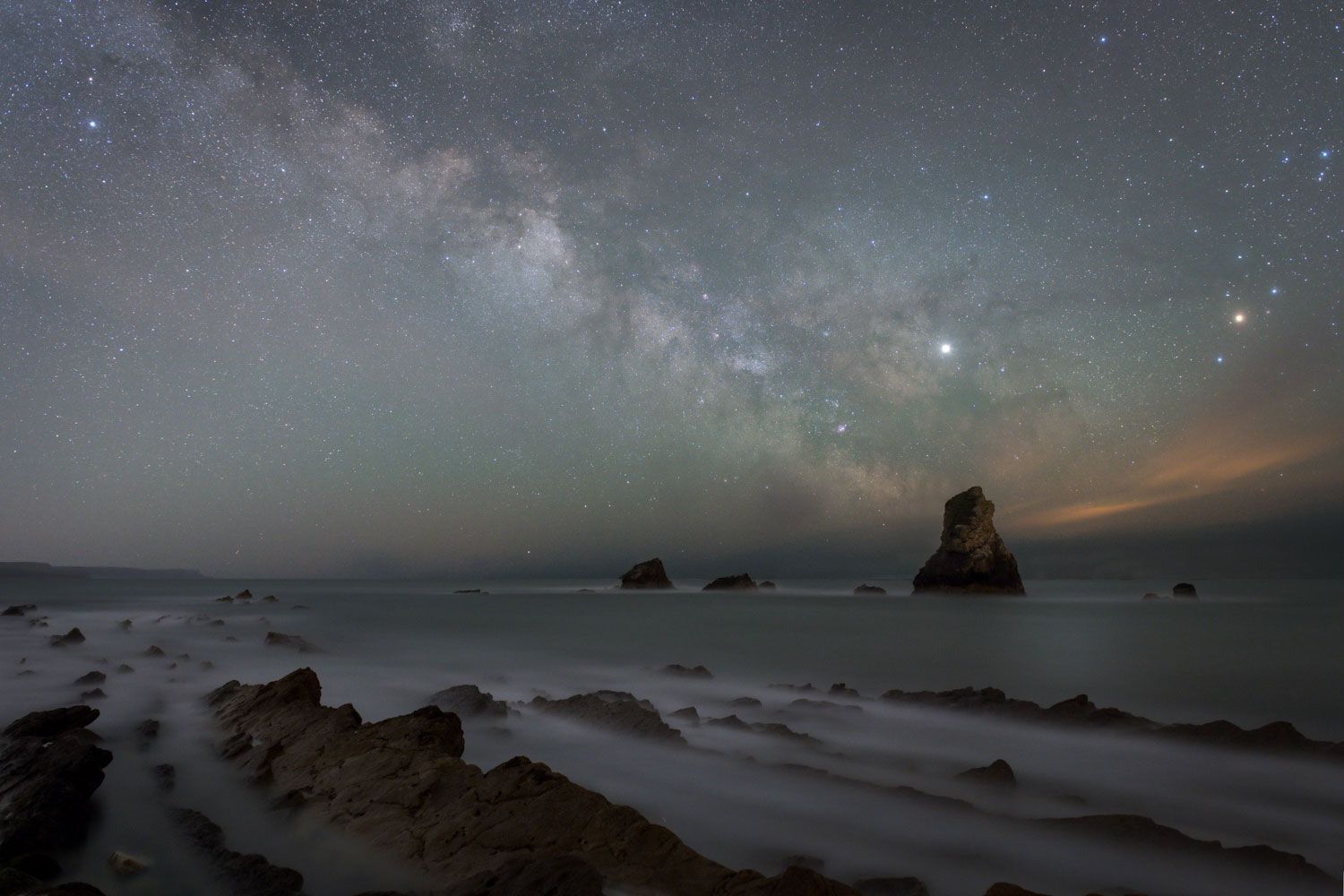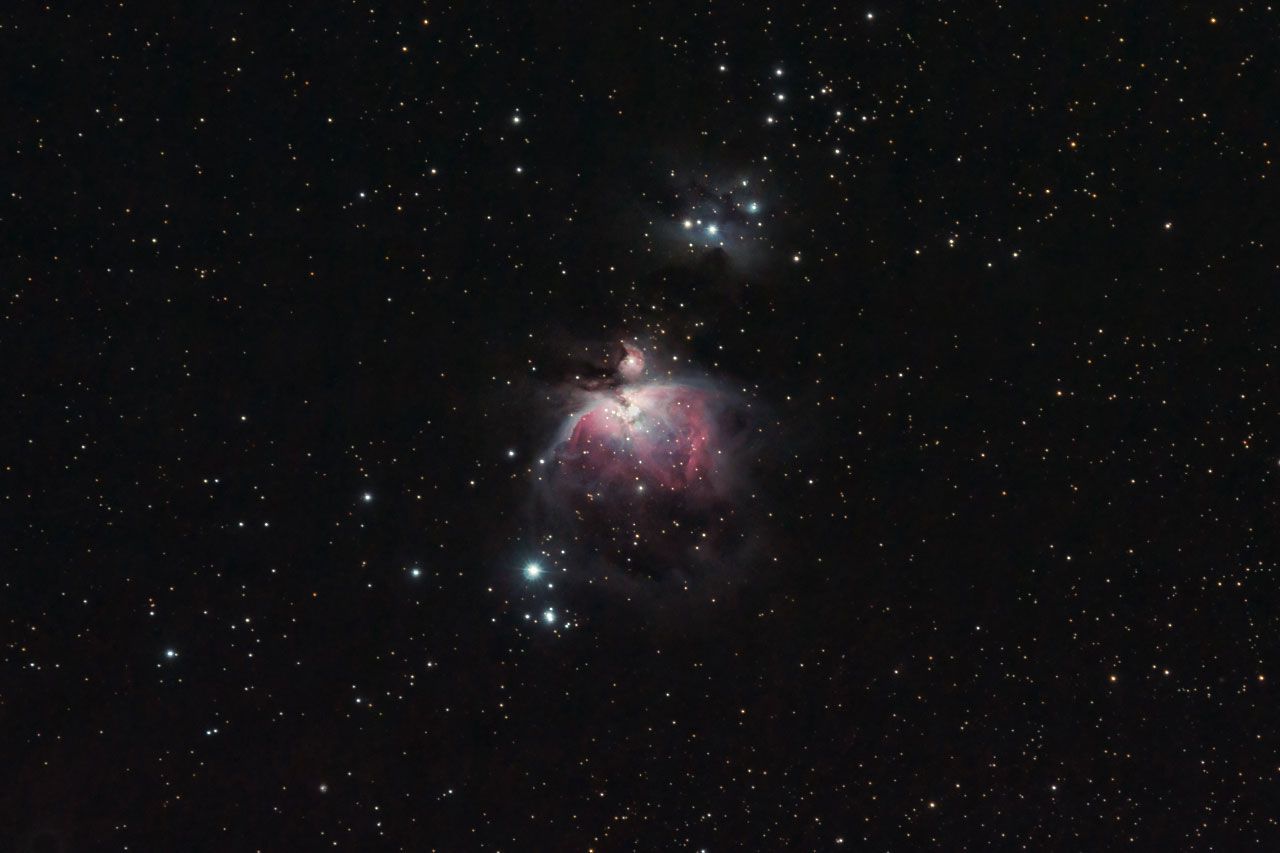Astrophotography in Dorset
April 30, 2017
A post I wrote back in 2017 about how to shoot the stars in my local area.
A little over a year ago I wrote a blog post about my love for night photography even with the mishaps that can happen... Unfortunately I still have the "astro bug" and to my friends bewilderment am often found on the Dorset coast at unsociable hours.
A year on from a simple star trail image over Durdle Door I feel my techniques and know-how have improved dramatically partly thanks to Ian Norman of Lonely Speck who provides fantastic tutorials and ideas regarding this genre of photography and I would highly recommend checking his site out If you also want to get into astrophotography.
It's All About Location
Astrophotography works best away from major cities and towns due to the light pollution that these places produce. I am lucky to live in Dorset one of the only counties without a major city or motorway and also has the English Channel to shoot over.
As you can see from the map there are many areas that are dark, the yellow, orange and red areas are no go but you can see the see is almost completely dark and luckily is the direction needed to shoot for the milkyway shots. Using the slider you can compare this map of south Dorset to central London…
Popular astrophotography locations in Dorset are usually scattered around the Jurassic Coast, this is due to them being dark and also overlooking the channel generally having interesting foreground interest too. Photographers favourites seem to be Durdle Door, Portland Lighthouse and Durlston in Swanage.
The difficulties with nightscape photography
Not only do we need to ensure we are far enough away from major cities we also need to check the weather and moon phases making this type of shot difficult to achieve.
If you want to shoot the Milkyway there cannot be any moonlight, and you must venture out during astronomical twilight. For star trails I personally prefer to have moonlight behind me as this provides lighting on my foreground subjects too.
The main issue is that you can wait for the perfect time during the month for your shoot and then the clouds can roll in and ruin the whole shot.
Another real issue can be focusing in the dark, I find the best technique for this is to use the camera’s LCD screen to zoom in and manually focus on subjects.

Types of Astrophotography to explore
There different are sub genres of astrophotography to play with too, leading types are Milkyway, star trails, aurora, nebulae and meteors.
Due to my southern location aurora shots are near impossible to achieve but I do have the others available to me.
As the UK is in the northern hemisphere this means stars in the Orion constellation are available above the horizon from October through to March and then the Galactic Core / Milkyway is available March through to September.
My personal favourites are both star trails and shots of the Milkyway galactic core, I love shooting these star shots as they remind me of my fascination as a kid with the planets and space. These images help show how insignificant our tiny planet is and the vastness of our galaxy.

Techniques for shooting star images
Post processing of astro images is incredibly important, you will struggle to achieve pleasing results without processing these shots correctly. I have been able to pick up some useful techniques from Lonely Speck and Astro Backyard helping me produce cleaner looking images.
I need to shoot with my lenses aperture wide open usually around f/2.8 this will let as much light onto the sensor as possible, I will then use a shutter speed of 20 seconds which is as long as I can shoot for to reduce streaking of the stars, this is due to the “500 rule” basically you need to take your focal length and divide by 500. In my case if I am using a 14mm lens but as I shoot with a crop sensor I need to convert my focal length by multiplying by 1.5 therefore the longest I can shoot for without streaking is 500 / 21 = 23.8 seconds.
This still isn’t enough so finally I need to increase my ISO to 6400! The issue with such a high ISO is that my camera produces a lot of noise which makes the image look grainy and dirty to help counter this I look to use a method of stacking my images, If you compare the two images below you can see the difference between 1 image and 8 images stacked using median mode.
The results are significant, but this produces an issue which is that the stars move during the duration of shooting, therefore the images need to be manually aligned to ensure the stars match before the images are stacked. Below are two unedited shots from camera so you can look at the difference between the first and eighth shot from this sequence. There is only 3 minutes 27 seconds (207 seconds) between these two shots
Due to this it can easily take 2 to 3 hours to complete the processing of one these images but I feel that it is worth it when you take into the account the increase in quality.
When it comes to producing these images there is also a lot of personal taste to take into account, some photographers prefer a cleaner more natural look, whilst other prefer to get out everybit of detail and colour available. It is a difficult subject to address as here in Dorset you cannot see what our camera sees with our eyes. All we can see are the stars location, not any of the space dust or colour from the nebula.
This image started the same but had different settings added. There is no right answer to how to process these and it is all down to your taste.
The future of my night photography
This genre of photography has a steep learning curve especially if you want to achieve fantastic results. I will continue to practise and study new techniques to improve my shots.
There are also a lot of different toys / equipment available to help. For me I really need to upgrade to a full frame camera as this will perform much better when it comes to low light photography. I recently purchased a super wide angle 14mm lens this allows me to get as much of the night sky in as possible and helps accentuate the vastness of space.
I am personally hoping to to travel around the UK and find new locations to shoot my images whilst a trip to Iceland or Finland is on the cards to fulfil my ambition to capture the Northern Lights.